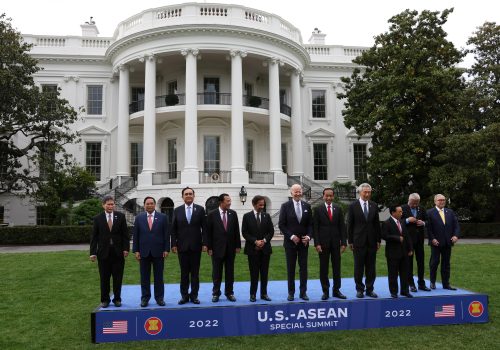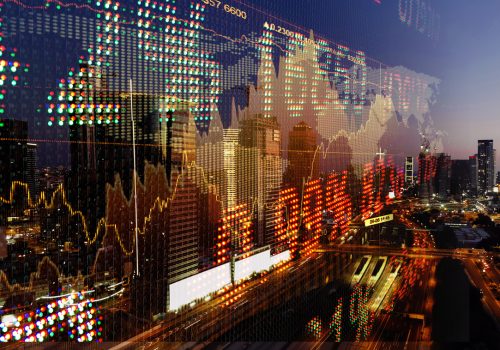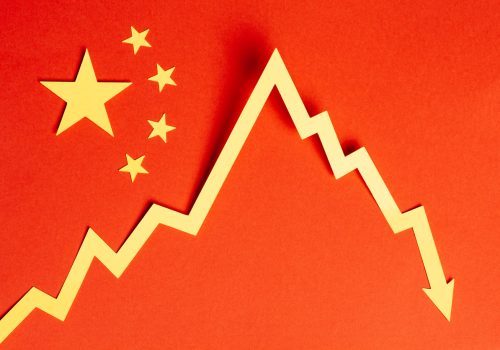Emerging markets need new engines of growth
In 2022, the difference in growth between emerging and advanced economies is projected to shrink to its smallest level this century. Forecasts suggest developing nations will grow at just over half a percent more than advanced economies, ending a two-decade period during which emerging markets (EMs) consistently grew much faster than their rich counterparts.
Prior to the 1990s, it was unusual for EMs to persistently grow more than their rich counterparts. From 1945 until 1995 fewer than one-third of developing economies grew faster than developed economies at any given time. Periods of explosive EM growth during one cycle were often reversed in the next. In the late 1990s, that changed. Starting at the turn of the century, EMs experienced a period of rapid growth that, if maintained, would have converged their income levels with advanced economies in a single generation.
Unfortunately, it seems as though the era of rapid EM growth is over. Now, many of the world’s lesser developed economies risk being ejected from this economic convergence process. A confluence of factors, including trade conflicts, a global pandemic, supply chain breakdowns, rising interest rates, and the war in Ukraine, have dismantled the engines of growth that had supported their rapid development throughout the 2000s and 2010s. These factors may not only halt, but also reverse this trend in the 2020s.
Back to the future
In the 1980s, 42% of low-income countries experienced a negative average growth rate. However this changed in the 2000s when the proportion of developing countries enduring economic downturns diminished. The share of low-income countries experiencing negative growth fell to 16% — a level that remained stable throughout the 2010s.
This growth stabilization in conjunction with key external tailwinds such as low interest rates, rising commodity prices, and shifts in global trading patterns, ushered in a new era of rapid comparative growth in emerging economies. From 2000 to 2009, EMs grew 4.5% faster than advanced economies. All else equal, that average growth rate suggested per capita incomes in emerging economies would converge with advanced economies like the US in a mere 30 years. However, since its peak in 2009, the divergence in growth has dramatically fallen, with China’s growth slowdown leading the pack. Projections from the IMF suggest EMs will only grow 0.6% faster than advanced economies in 2022 — a rate that would defer convergence by nearly 200 years. Unfortunately, it seems the original engines of growth — interest rates, commodity prices, and global trade — have begun to spin in reverse.
Interest rates
The easy financing conditions of the 2000s were a substantial factor in boosting investment and growth for EMs, particularly those connected to the global financial system. Global real interest rates, as measured by the proxy of the 10-year US treasury bond rate, fell by 1.7% over the course of the decade. Because of the critical role of Treasury bonds and the dollar in the global financial system, the dovish outlook of the Fed up until the global financial crisis invigorated investors’ risk appetite and encouraged capital to flow to EMs. This encouragement, coupled with the tightening of borrowing spreads between EMs and advanced economies, contributed to a boosted demand for EM assets and investments.
The environment EMs now face is radically different. Persistently high inflation across advanced economies has forced their central banks to rapidly raise rates. Historically, this meant EMs would likely face portfolio outflows, increased borrowing costs, and weakening currencies. Recent data from the Institute of International Finance show these outflows have already begun in March 2022 and have continued into June 2022, amounted to a total of $18.7B in net outflows by foreign investors. As the Federal Reserve and other advanced economies’ central banks continue to raise rates to their projected peaks in mid-2023, this trend will only intensify, turning interest rates from a tailwind for growth into a headwind for risk.
Trade
The largest external factor that drove EM growth throughout the start of the century was shifting global trade patterns. From 1980 to 1993 global trade grew, on average, around 4.7% per year — a bit more than the 3% global growth rate. However from 1990 to 2007, real trade growth picked up substantially, rising to a rate about twice as fast as global GDP growth. The increase in trade volumes was driven in part by the integration of China and former Soviet Union economies into the global trading system. This coincided with a global push for trade liberalization through tariff reductions that culminated in the creation of the World Trade Organization (WTO) in 1995. Compounding the trend, technological improvements in both shipping containers as well as computerized designs allowed these trade gains to spread far beyond China and the Eastern Bloc to other emerging economies.
The development of computer-based design technologies allowed precise models of manufactured components to be easily sent around the world, dramatically increasing the range and ease of goods produced abroad. This, along with cost reductions due to advances in container shipping, allowed production lines that were previously geographically constrained to expand across the globe. As EMs joined these global value chains (GVCs), they were able to take advantage of the time-tested route of manufacturing for export, thereby rapidly expanding their incomes.
Despite impressive growth, the global financial crisis marked a turning point in EMs’ fortunes. Since then the total value of trade has barely maintained pace with global GDP growth. This is in part because declining overall economic growth and the slowing pace of trade reforms in the aftermath of the 2008 global financial crisis stagnated GVC expansion.
Commodities
The final key factor in EMs’ rapid growth through the 2000s was a global boom in commodity prices. From January 2000 to June 2008, the Bloomberg Commodity Index grew by an incredible 233%, ending two decades of commodity price stagnation. Given that many EMs rely heavily on natural resource exports, rising prices provided a huge windfall to their incomes.
These price pressures were driven by growing demand from large EMs themselves. As economies like Brazil, Russia, India, China, and South Africa’s (BRICS) rapidly urbanized and industrialized, their demand for raw resources to fuel their growth surged. This was especially true for China, whose economy eventually became the world’s largest consumer of aluminum, coal, cotton, and soybeans (among other commodities). However, as Chinese growth faltered from its peak of 14% in 2007 to 7% throughout the mid-2010s, decreased consumption led to falling prices. Commodity exporters around the world felt the pain.
Since 2021, resurgent commodity prices have led some investors to declare a new commodity supercycle — an extended period during which demand outstrips supply, leading to structurally higher prices — similar to the one that helped drive EM growth in the 2000s. This new cycle would be driven by a global push for clean energy and other low-carbon policies, stoking demand for lithium, cobalt, and copper. While this cycle may arrive in the future, it seems increasingly unlikely to materialize in the short term. Throughout 2022, the macroeconomic backdrop for commodity markets has deteriorated as central banks around the world remove monetary support to fight inflation and China maintains its zero-COVID policies. With fears of an impending global recession rising, copper prices — a bellwether for both the industrial metals market and the real economy at large — have fallen to a 18-month low.
A possible path forward
A revitalization of convergence serves both emerging and advanced economic interests. The initial era of convergence brought about a truly global middle class, representing nearly half of the global population. This was coupled with extraordinary improvements in health, education, and employment benefiting hundreds of millions of people. Advanced economies should note issues in the developing world will have ramifications for them as well. As developing countries are increasingly ejected from the convergence process, the prospects of surges in migration, global financial instability, and geopolitical threats will be further amplified.
Of the macroeconomic tailwinds that drove EM growth in the 2000s, trade most remains viable. Unlike interest rates — in which government hands are tied by rising inflation — and commodity prices — that are determined more by macroeconomic factors than by government policies — trade policy is one area governments can still directly influence to help reinvigorate EM growth. Supporting trade through new, ambitious liberalization initiatives could reverse backsliding EM growth by restarting the integration of EMs into GVCs and creating opportunities for investment.
The US has already begun to take this approach towards trade in Asia through the launch of the Biden Administration’s Indopacific Economic Framework (IPEF), and in Latin America via the Americas Partnership for Economic Prosperity (APEP). Both are unlike traditional trade deals in that they have precluded the prospect for additional market access through tariff reductions, but these mega-regional deals could still create new business opportunities, renewing GVC expansion and lifting private investment.
As the macro backdrop EMs face shifts from tailwinds to headwinds, it is unlikely these economies will return to the growth levels they saw in the first decade of this century. Nevertheless, if executed properly, IPEF, APEC, and any other initiatives of a similar nature could provide a new engine of growth for EMs through potential provisions on supply chain integration, regulatory alignment, and investment incentives.
Niels Graham is an Assistant Director with the GeoEconomics Center.

At the intersection of economics, finance, and foreign policy, the GeoEconomics Center is a translation hub with the goal of helping shape a better global economic future.
Image: The exclusive district of Sukhumvit, Bangkok, Thailand, seen during a late afternoon in the autumn. Skyscrapers rising and crowded traffic on the streets.


